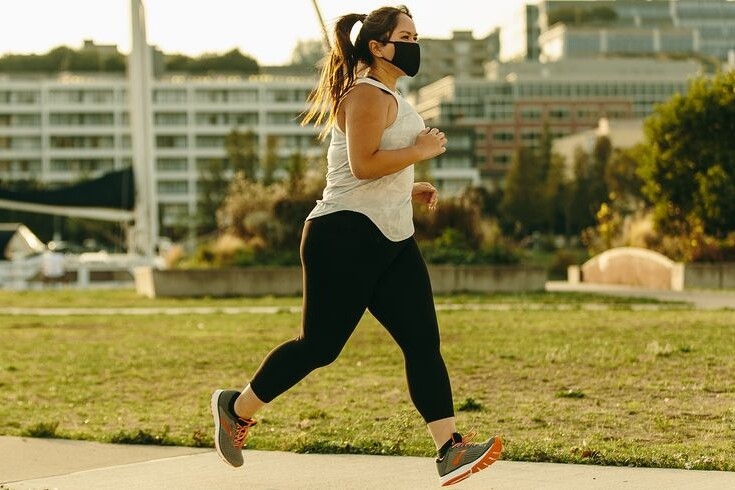Add Spring To Your Step! Tips To Keep You Running Healthy

The ice and snow have melted and now our favorite running routes are visible again. Spring is here and you may feel more like a butterfly coming out of its cocoon, but you may really be more like a bear coming out of hibernation. Those of you that took the winter off from running or have been using a treadmill will need to safely transition your body to the demands of running outside.
This winter, I chose to run indoors on a treadmill instead of out in wintry weather conditions. Now I am working on transitioning to running outside, burning my winter weight, and wanting to feel the wind and air on my face. I have noticed some increased soreness from running outdoors. I need to stretch more following my run and, the day after, perform conditioning exercises, foam roll, and stay hydrated to help me safely return outdoors. Here are some tips to help you transition back to your running program with a spring in your step.
Inside vs. Outside Running
There is an old saying among physical therapists who run, “When the foot hits the ground, everything changes.” And it’s true. On a treadmill, the floor moves and the runner keeps up to the preset pace. There is more shock absorption on a treadmill and you don’t have any wind or conditions that challenge you suddenly. Running outdoors presents challenges in terrain, whether it's asphalt, grass, dirt, or uneven sidewalks, and your body absorbs the shock from running rather than the treadmill. Be aware of the slants on most roads and avoid running on the same side of the road, change directions, or find a flat part of the road as much as possible to avoid any knee or hip injuries.
Watching Out for Warning Signs
Muscle soreness and feeling occasional tightness can be normal the day after a run. However, pain near a joint is a bad sign. If you notice pain near the hip, the knee, or the ankle, there may be a bigger issue than just soreness. Remember, if you are used to running 5 miles on a treadmill, running outdoors will be more stressful and potentially harmful to your body, so decrease your distances! Let your body slowly and gradually get accustomed to the stressors of outdoor running.
Strengthen your legs
With the added stress of running outdoors on your body, strengthening your leg muscles will help them to absorb the shock of running and ultimately prevent injury. Try adding in single-leg heel raises - start with 10 reps on each side and progress to 30 reps. This is a simple and great way to prevent shin splints, one of the most common injuries in running. Running alone is not enough to strengthen your legs. Adding in body weight squats can engage the glutes, hamstrings, quads, lower back, and core muscles. Training muscles in different ways helps you prevent from overuse injuries.
How old are your shoes? Don’t let the treadmill trick you!
Running on a treadmill does not break down as much of the tread on a shoe, however that does not mean that you are not breaking down the cushioning! As the cushion breaks down in a shoe, it doesn’t provide the shock absorption anymore. Instead your body takes over and that does not feel good. Take a look at the foam of your shoe. Is it wrinkled? That’s a sign that the cushioning is breaking down.
If you buy a new pair of running shoes, start tracking your miles. Most shoes have a life span of 300-500 miles. If you are close to this mileage, it’s better to replace your shoes - don’t wait until you start feeling aches and pains.
Stretching before or after - which is best?
Before you head out the door running, try what we call dynamic stretching. Dynamic stretching gets your muscles excited, primed, and improves coordination for your activity. Dynamic stretching is active movements that can be done in or outdoors, such as walking lunges, kicks, hamstring curls, inner thigh stretch, etc. Dynamic stretching raises your heart rate, warms the body, and is a great way to wake up your muscles so you can enjoy running in the fresh air.
Static stretching may cause one to overstretch and this can inhibit the strength in your muscles and is recommended most frequently after a workout. Try cooling down with some static stretches for the major muscle groups in running - quads, hamstrings, calves, and glutes.
Finally, make friends with your foam roller. If you don’t have one, try it out at your gym or check if a friend has one. It is a great investment. Foam rolling prior or following a run can help you avoid injuries and loosen up your muscles for your favorite physical activities.
Hope you enjoyed these running tips and get ready to have a great run!!
Lisa Tidman PTA, CLT, Yoga Instructor, Health Coach
PT360 Williston (802) 860-4360
www.pt360coop.com


